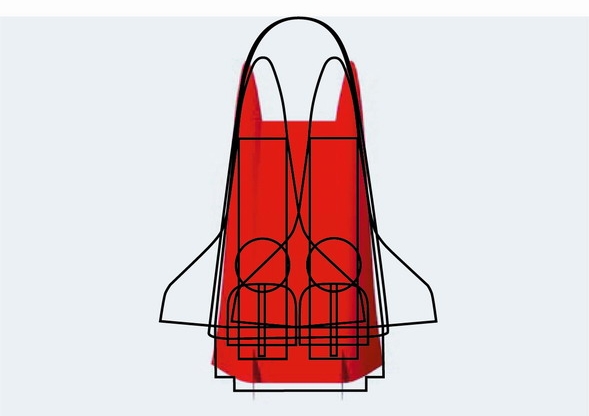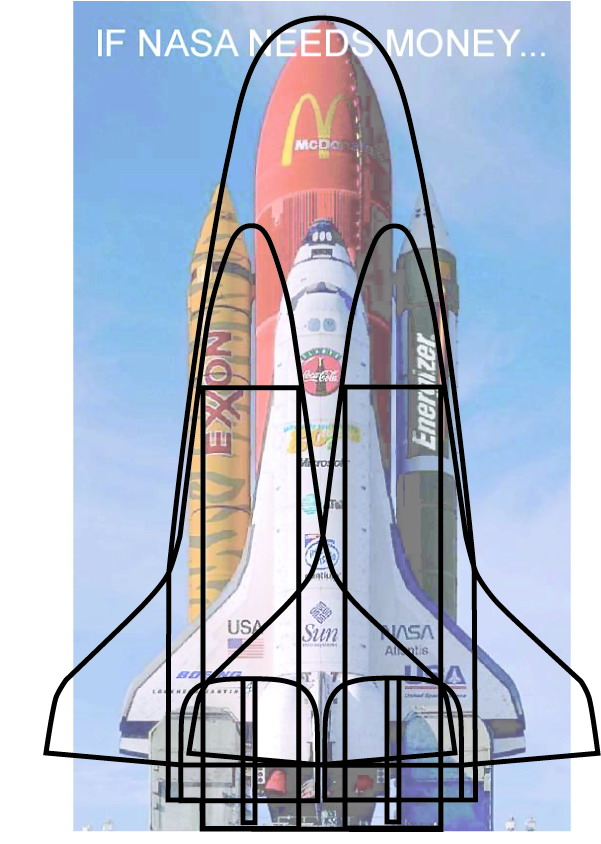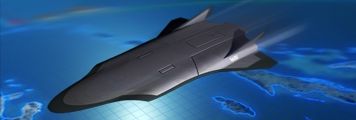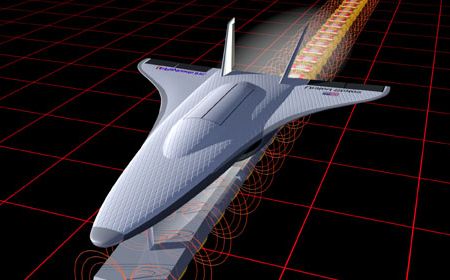
 |
|
|
(Under construction)
The Space Transportation System (STS) with Reusable Launch Ve- hicle (RLV) of the Next Generation (NG) Space Shuttle NG X-3033/ MagicStar is the further development of our revolutionary hyperson- ics concepts. Especially the integration of technologies developed with the projects and concepts:
Force Application and Launch from CONtinental United States (FALCON) Hypersonic Cruise Vehicle (HCV),
yields into a new technological masterpiece.
Hybrid
The Space Shuttle NG X-3033/MagicStar features our Hybrid Double Bubble (HDB) lifting body shape that gives it an unprecedented aero- dynamic efficiency with a highly reduced drag in the atmosphere, and delivers the needed lift-off force and angel of attack.
Energy Generation, Transfer and Consumption System (EGTCS)
The Energy Generation, Transfer and Consumption System (EGTCS) enables the:
and basically consists of the following components and their functionalities:
- Active Aerodynamic Characteristics Control (AACC) System (AACCS),
- Active Plasma Actuator (APAc) System (APAcS),
- Active Plasma Anti-Friction (APAF) System (APAFS), and
- Active Plasma Accelerator (APA) System (APAS).
Integrated/Combined Propellant Thermal Protection System
The Passive and Active Thermal Protection System consists of 4 different technologies that are integrated to one system. The TPS simply replaces all concepts that are based on ablative materials, particularly at the nose and leading edges, and makes the accommodation of the navigation, guidance and control system due to former shape change interferences to the aerodynamics and mass properties of an aerospacevehicle obsolete.
By applying the MagnetoHydroDynamic (MHD) generators of the Energy Regeneration System to harness destructive thermal energy for the generation of constructive electric energy they are also reducing the temperature at the aerospaceplane surface and in this way are functioning like a heat shield. The generated electricity is then partly used for the Technology 2 and 3.
This technology consists of a superconducting coil that generates electron beams for the magnetic fields which extend out beyond the nose and leading edges of the vehicle and by this is able to deflect the hot atmospheric air away from the vehicle's surface. It forms also some kind of virtual aerospacecraft body.
The Active Heat Shield™ is also used inside the air-breathing hypersonic engines to replace the heat-absorbing material,
to enrich the propellant for the scramjet engine with energy by the energy of surface heating (and the power of the MHD generator in the nose of the engine) reforming process to enrich/increase the energy concentration/chemical energy/heating capacity (around 42%) of the propellant by breaking up H2O into O and H2. Due to the high heat and the resulting pressure works this part like the expander cycle of a rocket engine and pumps the O and H2 gases, and the now reformed propellant directly into the scramjet combustor.
Aerodynamic Characteristics Control System
The Aerodynamic Characteristics Control system of the spaceplane by controlling the generated magnetic field as plasma actuators are
The ACCS is also supported by the PAFS that is applied like plasma actuators.
The plasma funnels developed from the magnetohydrodynamics forces over the air inlet increase the ability of the engine to collect air, increasing the effective diameter of the air inlet up to 5 to 10 times or even more of the original inlet. Thus, the MagicStar's engines can use atmospheric oxygen, even at heights above 40 km (131,233 ft).
"TSTO is dead"
What makes our MagicStar™ literally Hyper Revolutionary™ is the fact, that the hybrid shape of the aerospaceplane, which is derived from the hypersonic catamaran™ configuration, together with the EGTCS are the missing stones that let reduce the propellant con- sumption of the whole aerospaceplane after several rough estimat- ions and comparisons with classic air- and spacecrafts by around incredible 60% to 70% or even more. More fascinating is that this reduction is achieved while the velocity as an air-breather is in- creased by around 100%, and that the maximal speed is around 800% higher than of an air-breather. And by this, the dream of Single-Stage-To-Orbit (SSTO) systems like example given the National Aero-Space Plane (NASP) become a reality.
Images
Specification
- 2× Hypersonic with MHD Energy Regeneration System and Active Plasma Accelerator™, or
- 2× Active Hypersonic™ Engine (Plasmajet™)
with optional - ion thruster
Versions
The X-3033/MagicStar is also deliverable as:
Further Informations
Custom specific configurations are available on special request.
This is an actual project. Interested persons can contact us day and night.
Yes, it works™





